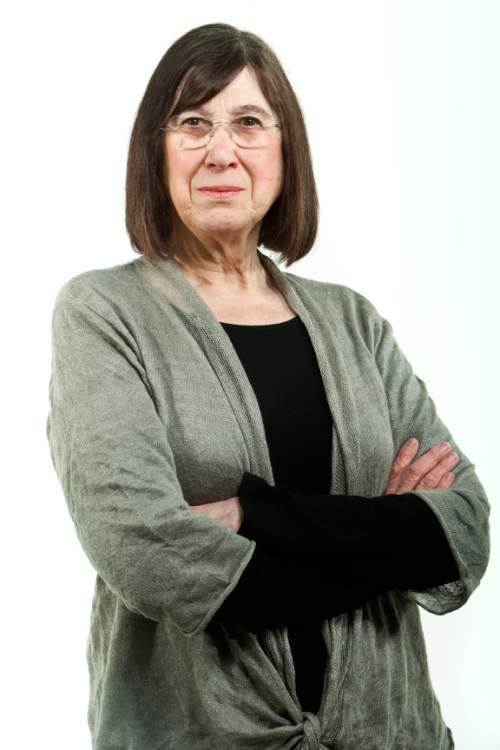This is an archived article that was published on sltrib.com in 2016, and information in the article may be outdated. It is provided only for personal research purposes and may not be reprinted.
Somewhere along the line, Virginia Snow Stephen — daughter of Lorenzo Snow, the fifth president of The Church of Jesus Christ of Latter-day Saints, and his seventh polygamous wife, Mary Elizabeth Houtz — distanced herself from the LDS Church and became an activist.
Born in 1864 and raised in Brigham City, Virginia graduated from the University of Deseret in Salt Lake City, taught school in her hometown and, in 1892, married Jay R. Stephen.
They moved to Salt Lake City where she worked and studied art, but their marriage was short lived. After five years, she divorced him on the grounds of "failure to support."
In 1895, Virginia began a near 20-year tenure as a faculty member in the University of Utah's Art Department. Most likely it was while working there she strengthened her commitment to socialism and support for expanding equity among all working men and women.
"Stephen was interested in the struggle of the working class to obtain justice under the United States legal system," historian John R. Sillito wrote in the 1981 Utah Historical Quarterly. "She scoffed at the idea that poor or working people ... could obtain equal justice under a capitalist law."
While at the university, Stephen assisted in a research project investigating the conditions of working girls and women in Utah. Not content with the status quo, she spoke about the social and political difficulties of bringing meaningful change.
"We may be persecuted and prosecuted for doing or saying the unusual, but we go on working for change just the same," she was quoted as saying in Sillito's work. "We are not out for the honor of the hour; we are working for reforms, which will be enjoyed by your children and your children's children. These changes may be slow in coming, they may come unexpectedly, but they will come."
Rooted in the socialist mores, Stephen was an advocate rather than a member of any such organizations. Yet little impeded her sense of fairness.
A strenuous opponent of capital punishment, she maintained, "If it is evil to kill in the heat of passion, is it not double evil to kill by a supine community consent called law?"
Standing behind her words, in 1914 she championed the cause of Joe Hill and the Industrial Workers of the World.
In 1914, Swedish-American laborer, IWW member and songwriter Joseph Hillstrom (Joe Hill) was accused of murdering Salt Lake City grocer and former policeman, John A. Morrison. The June 28, 1914, edition of The Salt Lake Tribune reported Hill was "found guilty of murder in the first degree."
According to Utah publisher Gibbs M. Smith, Hill was convicted on circumstantial evidence.
"The climate of opinion in the West and in Utah was decidedly hostile to the IWW and to Joe Hill and there ensued an international battle to prevent his execution by the State of Utah," he wrote in the Utah History Encyclopedia.
During the appeals process, Hill sat in prison for nearly 22 months. Stephen, who visited him several times, believed he didn't commit the crime and wrote letters on his behalf.
In June 1914, a Salt Lake Tribune article reported Stephen in Denver "conferring" with Hill's attorney, Judge O. N. Hilton, who was seeking to overturn the conviction. On June 27, 1914, the paper printed her response.
"Socialist friends in Salt Lake … appealed to me in the interest of fair play to see Judge Hilton," she wrote in a telegraph message from Chicago. "My only interest … was to assist in preventing a miscarriage of justice, because the accused happened to be a poor man without benefit of counsel."
Years later, the remarried Virginia Snow Filigno wrote that the Joe Hill Defense Committee was pressured to "stop their defense efforts" and was "plainly scared."
On Nov. 19, 1915, Hill was executed.
In 1916, Filigno was "forced to resign" from the university — presumably condemned for associating with the IWW.
Eileen Hallet Stone, author of "Hidden History of Utah" and "Historic Tales of Utah," a new compilation of her "Living History" columns in The Salt Lake Tribune, may be reached at ehswriter@aol.com. Additional sources: "The Legacy of Joe Hill" at sltrib.com; The Salt Lake Tribune, May 21, 1897 and Nov. 22, 1915; Utah Daily Chronicle, Dec. 6 and 9, 1915 and March 1916.



